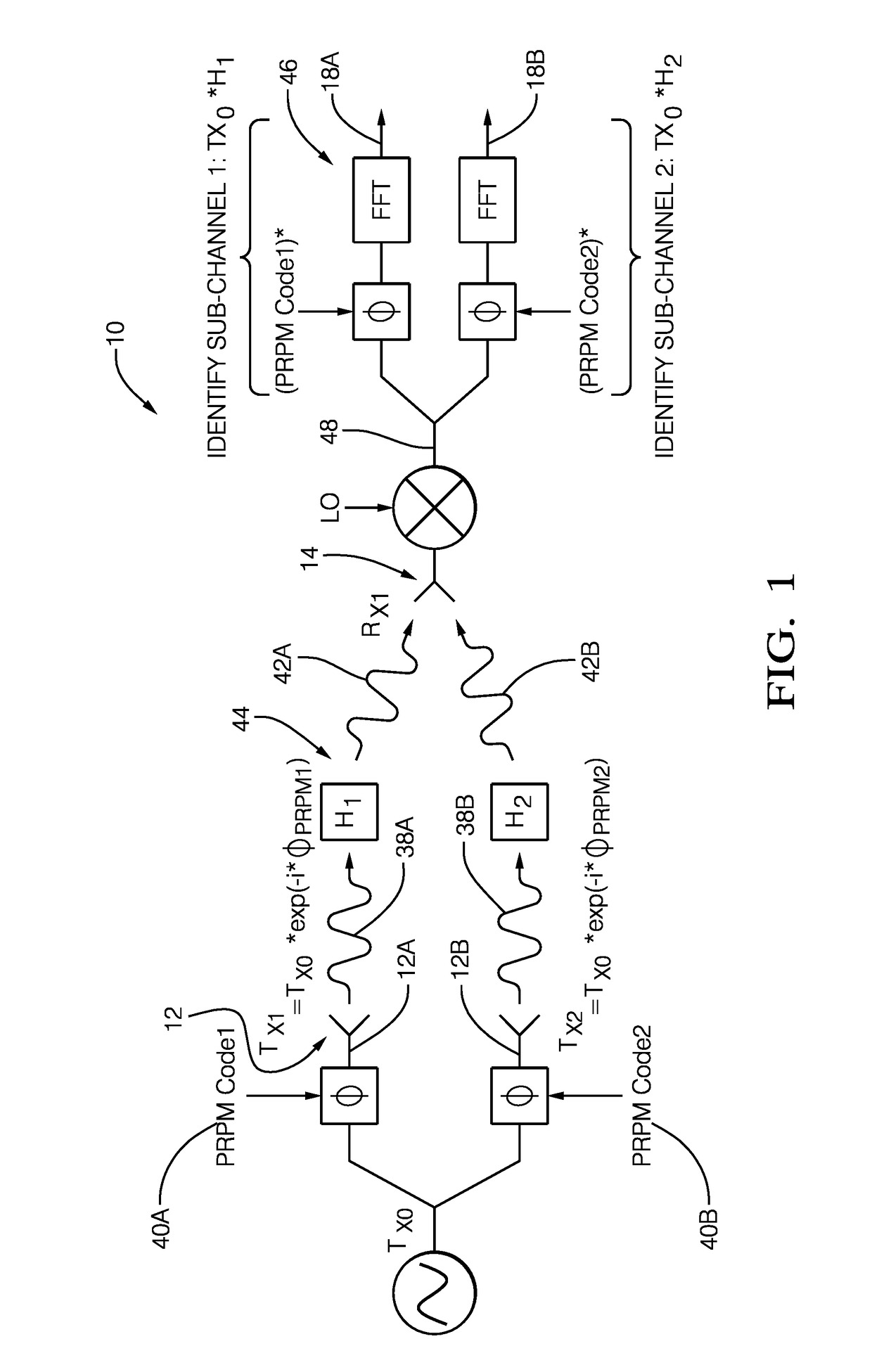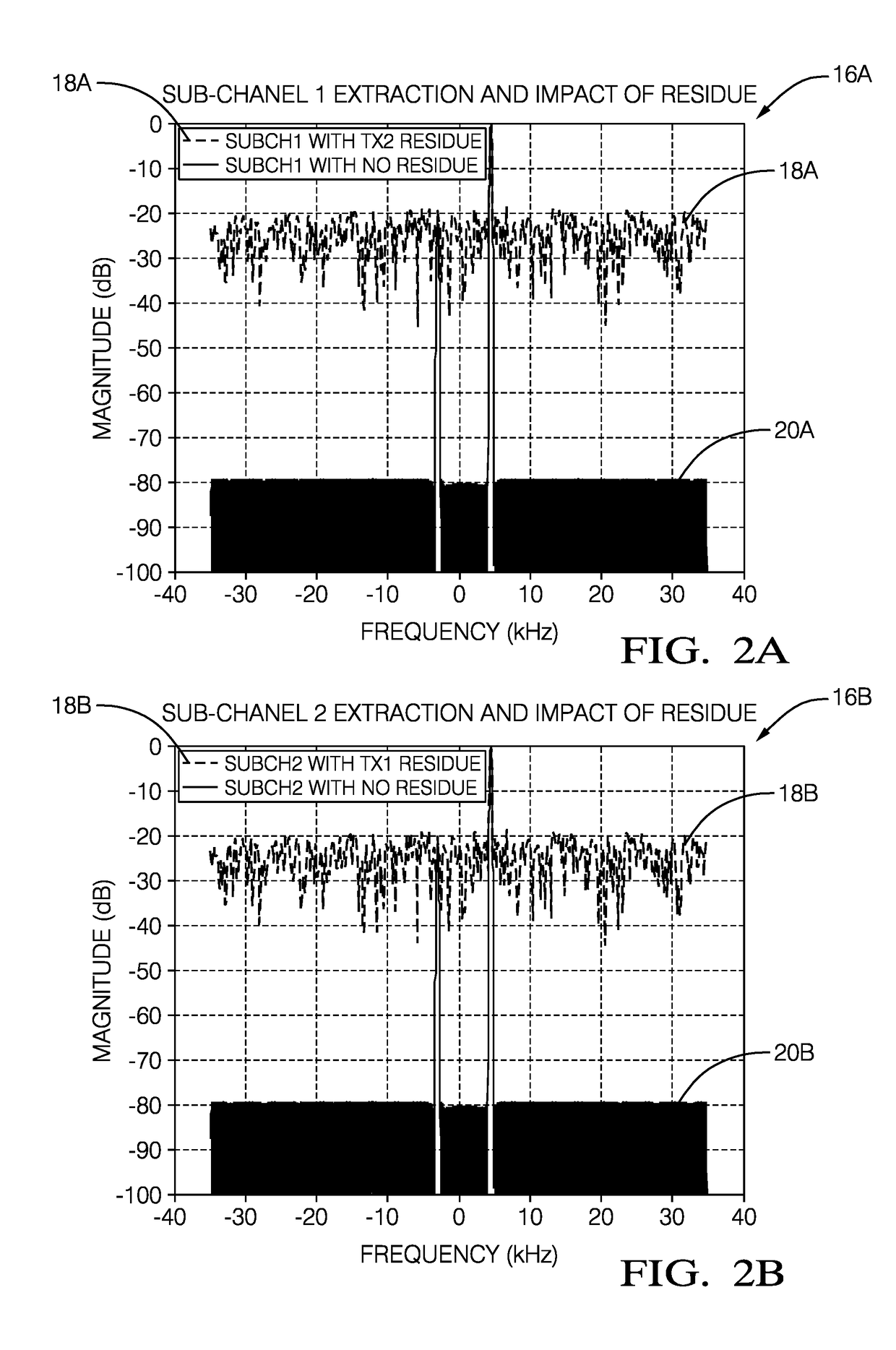Residue cancellation for automated vehicle MIMO radar
a technology of automated vehicles and residues, applied in diversity/multi-antenna systems, instruments, and reradiation, etc., can solve the problems of reducing the detection performance of objects, tdm introduces the ineffective use of the coherent processing interval (cpi) of the radar measurement, and the method has performance/cost trade-offs, so as to improve the limitation of pseudo-random phase modulation (prpm) and reduce the residue level
- Summary
- Abstract
- Description
- Claims
- Application Information
AI Technical Summary
Benefits of technology
Problems solved by technology
Method used
Image
Examples
Embodiment Construction
[0031]FIGS. 1 and 3 illustrate non-limiting examples of a PRPM MIMO Radar system, hereafter referred to as the system 10, with sub-channel extraction for the simple case of two transmit antennas and one receive antenna. A paper entitled MIMO Imaging Radar with Enhanced Range-Azimuth Sidelobe Suppression by T. Takayama, Y. Tokieda, and H. Sugawara, published in the Proc. IET Int. Radar Conf. (2012) describes an implementation of a pseudo-random phase code both within a chirp and between chirps for a MIMO radar system that illustrates residue for a single chirp and for integrated chirps. Pseudo-Random Phase Modulation is a method of digital modulation in which the phase of a signal sent to each transmit antenna is randomly varied in order to achieve a degree of orthogonality between simultaneously transmitted and received signals. The degree of orthogonality between signals depends on the ability of the phase modulation to distribute energy of the signals to be later effectively suppr...
PUM
 Login to View More
Login to View More Abstract
Description
Claims
Application Information
 Login to View More
Login to View More - R&D
- Intellectual Property
- Life Sciences
- Materials
- Tech Scout
- Unparalleled Data Quality
- Higher Quality Content
- 60% Fewer Hallucinations
Browse by: Latest US Patents, China's latest patents, Technical Efficacy Thesaurus, Application Domain, Technology Topic, Popular Technical Reports.
© 2025 PatSnap. All rights reserved.Legal|Privacy policy|Modern Slavery Act Transparency Statement|Sitemap|About US| Contact US: help@patsnap.com



